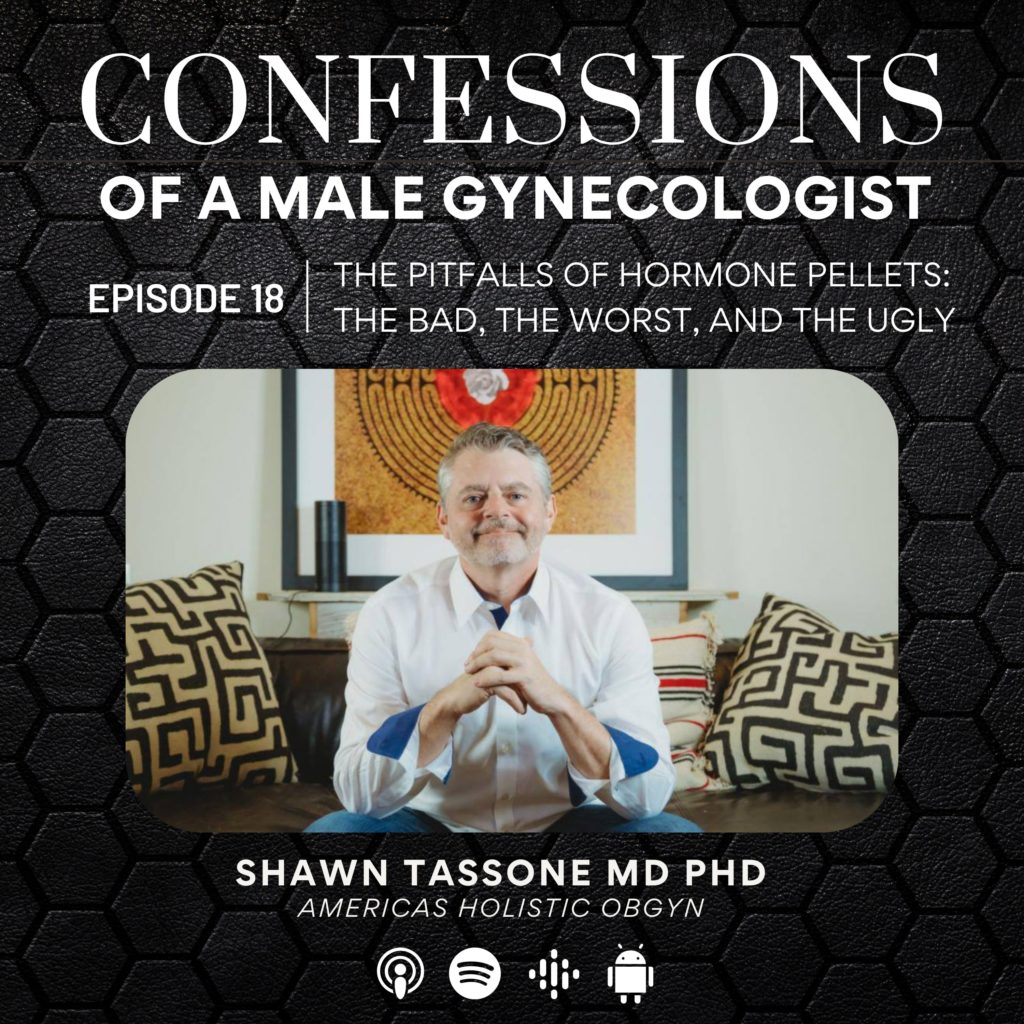I can’t bring myself emotionally, spiritually, psychologically, or physically to use hormone pellets with my patients.
Hormone pellets are tiny pellets containing hormones and medications inserted under your skin and replaced every three to six months. They’ve been around for decades, but recently they’ve gained popularity, and they’re now being inserted by Nurse Practitioners, plastic surgeons, and more.
In my clinic, many unhappy patients come to me with complications from pellets. Outside of my clinical experience, I also tried pellets myself a few years ago, which was the worst experience of my life.
Looking at the science, there are much better methods of getting bioidentical hormones, such as topical creams and sublingual troches, and they don’t come with the downsides of hormone pellets.
Over the summer, I had a TikTok go viral for the first time ever. It was about the top 5 things I wouldn’t do if I was a woman and number four on that list was that I wouldn’t use pellets. Two big takeaways for me came out of that viral moment: a lot of women are using pellets, and a lot of women don’t know what they are.
Today I’m sharing the top ten reasons why I’m a pellet anarchist, misleading ways that pellets are marketed, the things women need to know before using pellets, and what to do if you’ve had pellets and want to make a change.
Episode Highlights
-What are hormone pellets?
-How hormone pellets work
-Two irreversible side effects of pellet testosterone therapy if the levels go too high
-My concern with hormone injections
-The Wild West of hormone replacement
-What you can do if you’ve had pellets and you want to make a change
-Bioidentical hormones versus synthetic hormones
Pitfall #1: They’re expensive
-On average, pellets are around three times more expensive than other delivery options for bioidentical hormones
-Pellets average around $100-125/month versus around $45/month for sublingual troches, tablets, or topicals from a compounding pharmacy
Pitfall #2: Hormone levels are too high
-The sawtooth pattern that occurs with pellets: initially dramatically increased hormone levels followed by a steep decline
-How this pattern impacts the symptoms women experience
-The negative feedback loop caused by pellets
Pitfall #3: It’s a surgical procedure
-Adverse side effects from the procedure
-Although it’s a minor procedure, it’s one you’ll have to have repeated every couple of months
Pitfall #4: Once they’re in, they don’t come out
-If you have side effects or complications, you’re stuck with the pellets for 3-6 months or forced to get another medication to counterbalance the pellets and provide symptom relief
Pitfall #5: You’re subjected to minor surgery every 3-6 months
Pitfall #6: Irregular absorption rates
-Pellets are sold as being the ultimate in stable absorption rates, but research shows that’s not true
Pitfall #7: It’s a cash cow for providers
-The financial upside incentivizes providers to push pellets as the top hormone replacement option
Pitfall #8: Who’s inserting them?
-Lots of times, the providers putting in pellets are hormone dabblers, not experts
-There is no expertise in hormone pellets
Pitfall #9: It’s a club
-Hormone pellet companies charge providers a monthly fee to use the company name, logo, and product
Pitfall #10: You’re a number
-Hormone treatment plans should be personalized
-Why I don’t like protocol-driven hormones
Mentioned In This Episode
Blog Post | The Pitfalls of Pellets
Resources
Dr. Shawn Tassone’s Practice
Dr. Shawn Tassone’s Book | The Hormone Balance Bible
Dr. Shawn Tassone’s Integrative Hormonal Mapping System | Hormone Archetype Quiz

